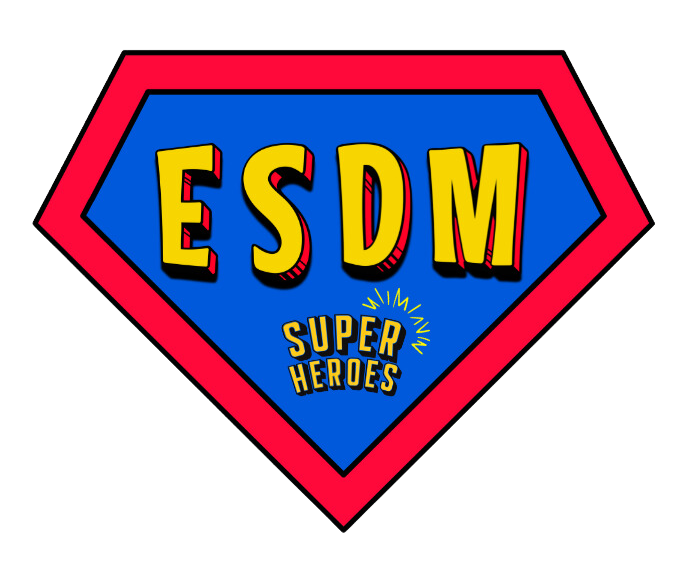
12 Week P-ESDM Parent Coaching Course
Let the learning adventure begin! You’ll find all your lessons below.
-
-
Week 1 - Meet & Greet.
A P-ESDM meet-and-greet session introduces parents to the Early Start Denver Model for children with autism, covering introductions, model overview, goal discussion, parent involvement explanation, interactive activities, Q&A, resource sharing, and building a support network. The session aims to equip parents with therapy understanding, engagement strategies, and a supportive community for child development.
A P-ESDM meet-and-greet session introduces parents to the Early Start Denver Model for children with autism, covering introductions, model overview, goal discussion, parent involvement explanation, interactive activities, Q&A, resource sharing, and building a support network. The session aims to equip parents with therapy understanding, engagement strategies, and a supportive community for child development.
-
-
-
Week 2, Lesson 1.
In today's session covers Chapter 4 of "An Early Start for Your Child with Autism," emphasising capturing your child's attention and engagement for learning and growth. Practical strategies include using toys and sensory activities to enhance social and communication skills.
In today's session covers Chapter 4 of "An Early Start for Your Child with Autism," emphasising capturing your child's attention and engagement for learning and growth. Practical strategies include using toys and sensory activities to enhance social and communication skills.
-
-
-
Week 3, Chapter 5 - Find the Smile.
Chapter 5 of "An Early Start for Your Child with Autism" focuses on integrating sensory activities into daily routines to improve social interactions for children with autism. It provides parents with practical techniques to enhance social and communication skills in a fun and effective manner, emphasizing the importance of making these activities enjoyable for learning and bonding.
Chapter 5 of "An Early Start for Your Child with Autism" focuses on integrating sensory activities into daily routines to improve social interactions for children with autism. It provides parents with practical techniques to enhance social and communication skills in a fun and effective manner, emphasizing the importance of making these activities enjoyable for learning and bonding.
-
-
-
Chapter 6 - It Takes Two to Tango.
In this lesson we will learn about Chapter 6 of "An Early Start for Your Child with Autism" highlights the significance of building back-and-forth interactions for social and communication development in children with autism. It stresses interactive play and shared activities to enhance these skills, with strategies like turn-taking and joint attention. Practical examples and exercises are included for parents to practice these interactions in daily routines.
In this lesson we will learn about Chapter 6 of "An Early Start for Your Child with Autism" highlights the significance of building back-and-forth interactions for social and communication development in children with autism. It stresses interactive play and shared activities to enhance these skills, with strategies like turn-taking and joint attention. Practical examples and exercises are included for parents to practice these interactions in daily routines.
-
-
-
Week 5 - Chapter 7, Talking Bodies.
In todays lesson: Chapter 7 of "An Early Start for Your Child with Autism" highlights the importance of nonverbal communication for children with autism. It discusses how gestures, facial expressions, and body language can enhance communication and relationships. The chapter offers strategies for parents to interpret and respond to their child's nonverbal cues, promoting interactive communication development.
In todays lesson: Chapter 7 of "An Early Start for Your Child with Autism" highlights the importance of nonverbal communication for children with autism. It discusses how gestures, facial expressions, and body language can enhance communication and relationships. The chapter offers strategies for parents to interpret and respond to their child's nonverbal cues, promoting interactive communication development.
-
-
-
Week 6 - Chapter 8, “Do What I Do”.
Chapter 8 of "An Early Start for Your Child with Autism" focuses on integrating strategies to help children with autism connect, communicate, and learn in daily activities. It emphasises incorporating learning opportunities into routines like playtime and mealtime to improve social, communication, and cognitive skills. The chapter introduces "naturalistic developmental behavioural interventions" that combine behavioural methods with developmental principles for personalised interventions.
Chapter 8 of "An Early Start for Your Child with Autism" focuses on integrating strategies to help children with autism connect, communicate, and learn in daily activities. It emphasises incorporating learning opportunities into routines like playtime and mealtime to improve social, communication, and cognitive skills. The chapter introduces "naturalistic developmental behavioural interventions" that combine behavioural methods with developmental principles for personalised interventions.
-
-
-
Week 7 - Chapter 9, “Let’s get Technical”.
In today’s lesson: n Chapter 9 of "An Early Start for Your Child with Autism," the focus is on how children learn, specifically within the Early Start Denver Model (ESDM). The chapter emphasises the importance of using evidence-based, play-centred strategies to enhance learning and development for young children with autism. The ESDM method combines developmental and behavioural techniques in daily routines to improve social communication, play skills, and language development.
In today’s lesson: n Chapter 9 of "An Early Start for Your Child with Autism," the focus is on how children learn, specifically within the Early Start Denver Model (ESDM). The chapter emphasises the importance of using evidence-based, play-centred strategies to enhance learning and development for young children with autism. The ESDM method combines developmental and behavioural techniques in daily routines to improve social communication, play skills, and language development.
-
-
-
Week 8 - Chapter 10, “The Joint Attention Triangle”.
Chapter 10 of "An Early Start for Your Child with Autism" discusses the Joint Attention Triangle, a crucial skill for children to share attention and focus. Strategies like using interactive toys and modeling turn-taking are provided to improve joint attention and social skills in children with autism.
Chapter 10 of "An Early Start for Your Child with Autism" discusses the Joint Attention Triangle, a crucial skill for children to share attention and focus. Strategies like using interactive toys and modeling turn-taking are provided to improve joint attention and social skills in children with autism.
-
-
-
Week 9 - Chapter 11, "It's Playtime".
Chapter 11 of "An Early Start for Your Child with Autism" highlights the significance of play in children's development. Strategies include types of play like exploratory, functional, pretend, and social play. Engagement involves following the child's lead, creating interaction opportunities, and expanding play. Supporting social skills through modelling and reinforcement is crucial.
Chapter 11 of "An Early Start for Your Child with Autism" highlights the significance of play in children's development. Strategies include types of play like exploratory, functional, pretend, and social play. Engagement involves following the child's lead, creating interaction opportunities, and expanding play. Supporting social skills through modelling and reinforcement is crucial.
-
-
-
Week 10 - Chapter 12
Chapter 12 of "An Early Start for Your Child with Autism" focuses on using daily routines to enhance learning, communication, and social skills in children with autism. It highlights: Routine-Based Intervention stressing the importance of predictable routines.Strategies like predictability, creating communication opportunities, teaching new skills, promoting independence, and building connections.
Chapter 12 of "An Early Start for Your Child with Autism" focuses on using daily routines to enhance learning, communication, and social skills in children with autism. It highlights: Routine-Based Intervention stressing the importance of predictable routines.Strategies like predictability, creating communication opportunities, teaching new skills, promoting independence, and building connections.
-
-
-
Week 11 - Chapter 13
Chapter 12 of "An Early Start for Your Child with Autism" discusses using daily routines to enhance learning, communication, and social skills in children with autism. Key points include: Routine-Based Intervention stresses the value of predictable routines. Strategies involve predictability, communication opportunities, skill teaching, independence, and building connections. Individualising strategies for each child is crucial.
Chapter 12 of "An Early Start for Your Child with Autism" discusses using daily routines to enhance learning, communication, and social skills in children with autism. Key points include: Routine-Based Intervention stresses the value of predictable routines. Strategies involve predictability, communication opportunities, skill teaching, independence, and building connections. Individualising strategies for each child is crucial.
-
-
-
Week 12 - Chapter 14,"Putting it all Together".
Chapter 14, there are practical strategies and advice for parents and caregivers on assisting children with autism in enhancing their social skills, fostering friendships, and navigating social interactions effectively. The chapter highlights the significance of patience, perseverance, and a nurturing setting in fostering favourable social interactions for children with autism.
Chapter 14, there are practical strategies and advice for parents and caregivers on assisting children with autism in enhancing their social skills, fostering friendships, and navigating social interactions effectively. The chapter highlights the significance of patience, perseverance, and a nurturing setting in fostering favourable social interactions for children with autism.
-
